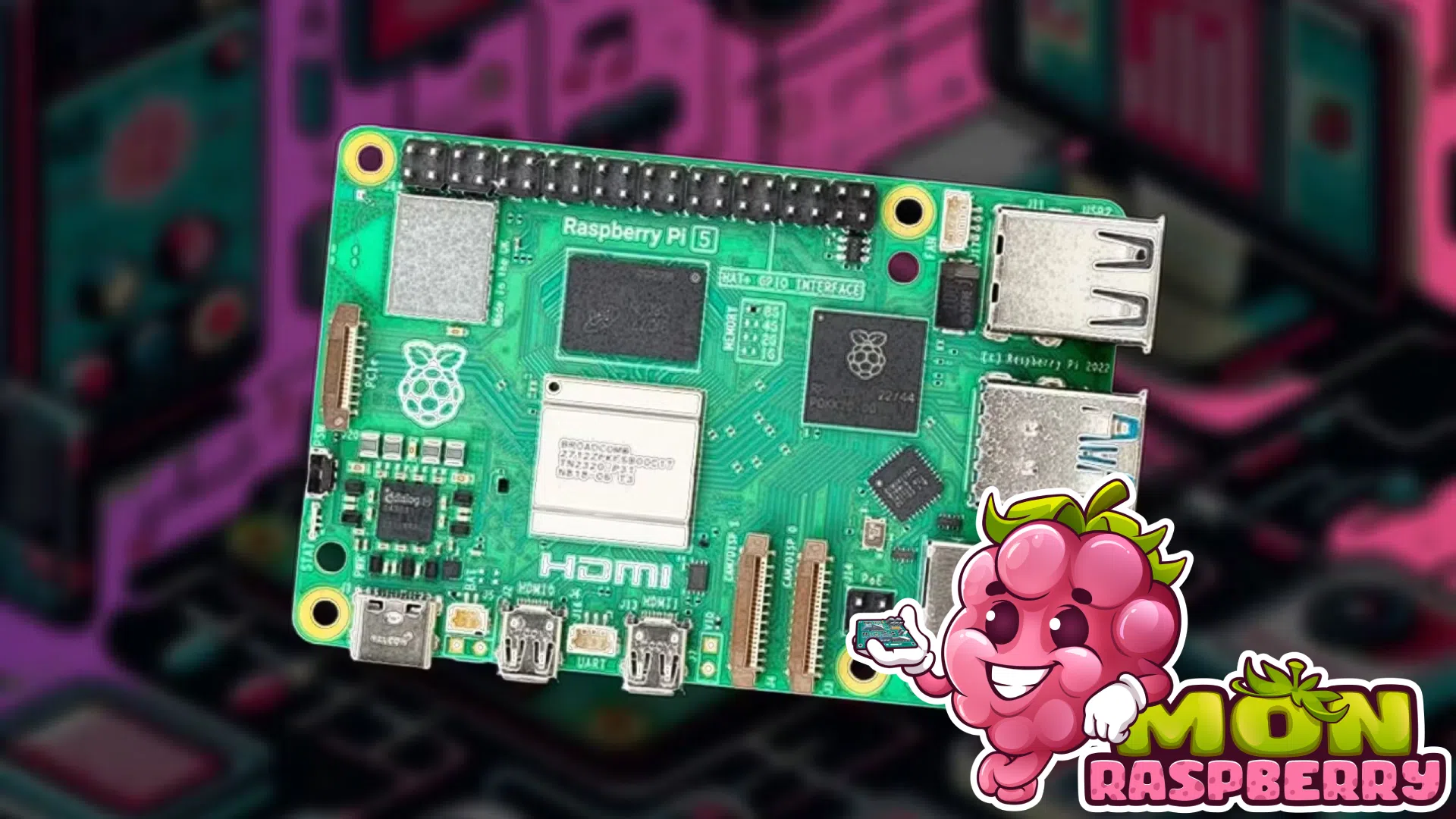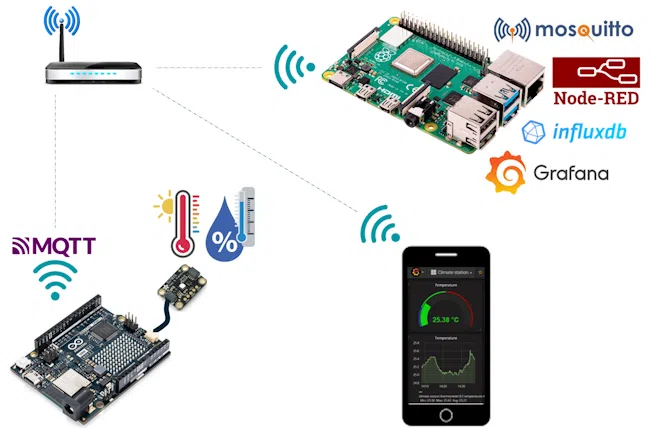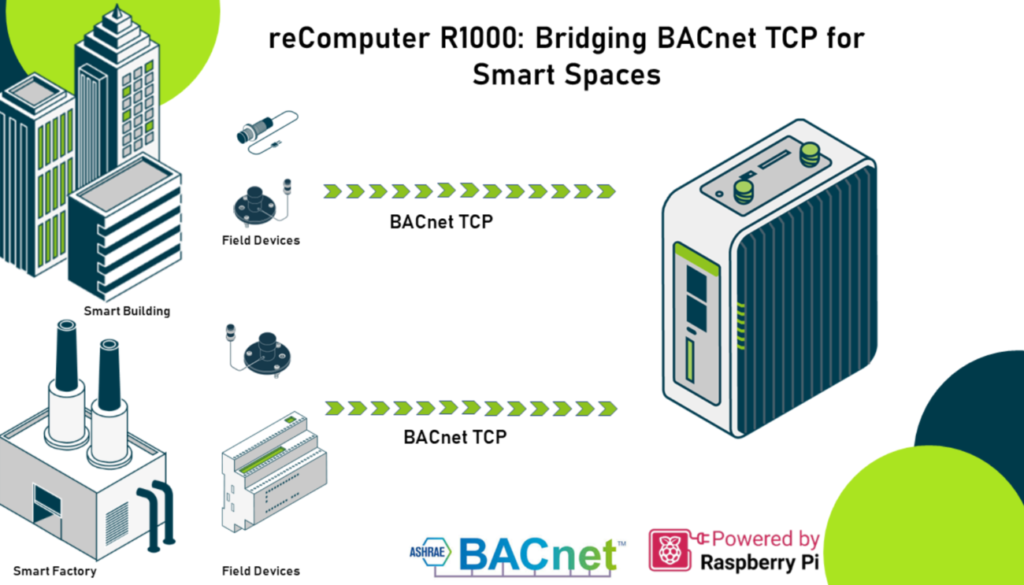
What to do with a Raspberry Pi in 2025?
2025 is the year the Raspberry Pi reaches new heights. From the ultra-high-performance Raspberry Pi 5 to ultra-compact versions like the Pico 2 WThis ecosystem continues to evolve and inspire ever more daring projects. In this article, we explore all facets of the Raspberry Pi in 2025, from technical innovations to practical applications, including project ideas for makers, businesses and the general public. electronics enthusiasts.
1. The evolution of the Raspberry Pi : A historical and futuristic overview
1.1. A path of innovation
Since its launch in 2012, the Raspberry Pi revolutionized the way people learn to use computers and DIY (Do It Yourself). From the first A and B models to the mighty Raspberry Pi 4 and Pi 400Each generation has brought improvements in performance, connectivity and versatility. In 2025, we can look forward to :
- Raspberry Pi 5 With an ARM Cortex-A76 processor running at 2.4 GHz, up to 16 GB RAM and enhanced connectivity (USB-C, PCIe, dual HDMI), it delivers performance worthy of a desktop minicomputer.
- Raspberry Pi Pico 2 W Thanks to the RP2350 microcontroller, which combines ARM and RISC-V architectures, this version integrates Wi-Fi and Bluetooth 5.2, ideal for IoT and embedded projects.
1.2. Technical innovations in 2025
Innovations don't stop at raw performance:
- Interface and connectivity USB-C compatible ports, PCIe expansion options for faster peripherals and optimized wireless connectivity.
- Energy optimization Low power consumption and innovative cooling systems to maintain high performance without overheating.
- Compatibility and modularity A richer-than-ever ecosystem of accessories and HATs (Hardware Attached on Top), enabling the Raspberry Pi to be adapted to a multitude of applications.
2. Projects for every taste: get inspired!
Whether you're a beginner or an expert, here are a few ideas for projects that will bring innovation to 2025.
2.1. Home automation and smart home
- Complete home automation Raspberry Pi: Control lighting, heating, security and even the watering of your plants using IoT sensors and web interfaces. The Raspberry Pi 5, with its processing power, can act as the central brain coordinating all these elements.
- Intelligent security systems The new, easy-to-install system: integrate cameras, motion sensors and alarms, accessible via a secure mobile app. Integrated Wi-Fi modules facilitate remote access, even on the move.

2.2. IoT projects and industrial applications
- Connected weather stations Create a weather station capable of measuring temperature, humidity, atmospheric pressure and even air quality. Data can be viewed in real time on a web interface or stored in the cloud for long-term analysis.
- Environmental and agricultural monitoring Deploy sensors in your fields to monitor plant health, optimize irrigation and reduce energy costs. These projects promote more sustainable and intelligent agriculture.
- SmartBuilding : Supervise your buildings and control all your systems from a single location Raspberry Pi controller.

2.3. Multimedia and entertainment projects
- Retro games console : Transform your Raspberry Pi 5 into a retro games console with Recalbox. Take advantage of emulators to play your favorite classics, all in a customized case.
- Digital jukebox Create an interactive music system, controlled via touchscreen or buttons, to play your favorite playlists in vintage style.
- Smart Mirror : Create a smart mirror displaying time, weather, notifications and even personalized widgets. A perfect fusion of technology and interior design.

2.4. Innovative artificial intelligence projects
- Local AI server : Use the Raspberry Pi 5 to deploy small AI models capable of facial recognition, real-time data analysis and robot control. The new computing capacities even make it possible to envisage embedded AI applications.
- Computer vision projects Integrate cameras and sensors to create intelligent surveillance systems or assistive devices for the visually impaired.
2.5. Robotics and mobility projects
- Autonomous robots Build a line-following robot, a drone or even a remote-controlled vehicle that harnesses the Raspberry Pi's processing capabilities for real-time navigation and decision-making.
- Mobile home automation devices : Develop embedded systems to control shutters, doors or sprinkler systems, bringing a new dimension to mobility in the home.
3. Tips and tricks to maximize your Raspberry Pi experience
3.1 Technical optimization
- Overclocking and thermal management Push the performance of your Raspberry Pi 5 by carefully overclocking while installing heat sinks or fans.
- Using MicroPython and C/C++ Choose the programming language that suits your needs, starting with MicroPython for quick projects and moving on to C/C++ for more complex applications.
- Feed management : Adopt energy management strategies to maximize the autonomy of your projects, particularly for IoT applications or mobile.
3.2 Inspiration and community sharing
- Online communities Join forums and Facebook groups dedicated to Raspberry Pi projects to share your achievements and receive constructive feedback.
- Sharing open source projects : Publish your tutorials and guides on GitHub and platforms like Hackaday or Elektor Labs to raise your profile and attract a passionate audience.
- Events and competitions Participate in hackathons, competitions and events like Coolest Projects, which are great ways to showcase your work and discover new ideas.
4. Case studies : Inspiring projects in action
4.1. The connected smart home
In a modern residence, a group of makers has used the Raspberry Pi 5 to centralize control of lighting, heating and security. Thanks to IoT sensors and an intuitive web interface, residents can manage their home from their smartphone, even from abroad. This project demonstrates how Raspberry Pi can transform a traditional home into a smart, energy-efficient environment.
4.2. The revolutionary digital jukebox
A music enthusiast has rethought the jukebox concept using a Raspberry Pi 5, touch buttons and an LED screen. The system, which also incorporates a Bluetooth module to connect to smartphones, allows users to select their favorite tracks and view colorful animations. This project combines nostalgia and modernity, creating a unique interactive experience.
4.3. The CanSat mini-satellite
Engineering students have designed a mini-satellite nicknamed CanSatusing a Raspberry Pi 5 and various sensors to measure environmental data at altitude. This ambitious yet accessible educational project illustrates the potential of the Raspberry Pi in space applications, while providing hands-on experience in electronics and programming.
5. Future prospects : Towards a Maker revolution
5.1. Small-scale artificial intelligence
Visit AI projects on Raspberry Pi continue to evolve, making it possible to implement facial recognition algorithms, image processing and even personalized voice assistants on small devices. With modules such as the Raspberry Pi AI Kit or the Google Coral USB Accelerator, the future of embedded AI is within reach.
5.2. An expanding ecosystem
Communities of makers, developers and engineers actively collaborate on platforms such as Elektor Labs, Hackaday and RaspberryTips. These sharing spaces help spread innovative ideas, benefit from constructive feedback and inspire new projects that push the boundaries of what a Raspberry Pi can do.
5.3. New applications for industry
Beyond DIY projects, companies are adopting the Raspberry Pi for industrial applications ranging from environmental monitoring to production management. Raspberry Pi solutions, combined with IoT and AI, offer opportunities to automate processes, reduce energy costs and improve productivity.
Conclusion
What to do with a Raspberry Pi in 2025? The possibilities are endless! From the ultra-high-performance Raspberry Pi 5 to compact variants like the Pico 2 W, this ecosystem offers a versatile platform for transforming your ideas into concrete, innovative projects. Whether you're a home automation enthusiast, a creative maker, an industrial engineer or a developer looking for a challenge, 2025 is the ideal year to explore, experiment and push back the boundaries of Raspberry Pi technology.
